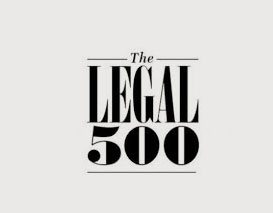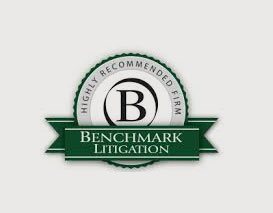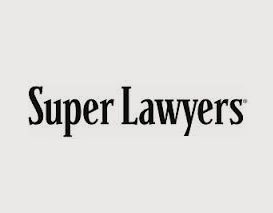Second Department Finds Sanctions Appropriate in Mortgage Foreclosure Action Due to, Inter Alia, the Constructive Notice Provided by the Filing of a Notice of Pendency
Print Article- Posted on: Jan 24 2025
As readers of this BLOG know, we frequently address issues involving mortgage foreclosure, generally, and notices of pendency, specifically.[1]Today’s article involves both issues with a sprinkle of sanctions. By way of background, and as explained in prior articles, a notice of pendency (or lis pendens) is a provisional remedy available to litigants seeking a judgment that affects title to real property. 5303 Realty Corp. v. O&Y Equity Corp., 64 N.Y.2d 313 (1984). The purpose of a notice of pendency is to put defendants and the rest of the world on notice of the full scope of the rights claimed by plaintiffs to defendants’ real property. Sjogren v. Land Assoc., LLC, 223 A.D.3d 963, 965 (3rd Dep’t 2024).
Notices of pendency are governed by Article 65 of the CPLR. The filing of notices of pendency is typical in mortgage foreclosure actions. In fact, a notice of pendency must be filed at least twenty (20) days before a judgment of foreclosure and sale is rendered. See RPAPL 1331. Because the “ability to file a notice of pendency is a privilege that can be lost if abused,” once lost a successive notice of pendency may not be filed after the initial notice is cancelled. In re Sakow, 97 N.Y.2d 436, 441 – 42 (2002) (citations omitted). The “no second chance” rule applies whether the notice expires or is cancelled. Id. An exception to the “no second chance” rule is found in CPLR 6516, which permits successive notices of pendency in mortgage foreclosure actions due to the mandate found in RPAPL 1331.
The import of a notice of pendency was discussed by the Appellate Division, Second Department, on January 22, 2024, in U.S. Bank National Association v. Tait. The borrower in Tait borrowed money from the lender and secured the repayment obligations with a mortgage on real property located in Queens, New York (the “Property”). In 2015, the lender commenced a foreclosure action and, at the same time, filed a notice of pendency. Approximately three (3) months after the notice of pendency was filed “nonparty Innovation Two, Inc. (hereinafter Innovation), allegedly purchased the subject property from the [borrower].” The borrower defaulted in appearing in the action and the trial court issued an order of reference and a judgment of foreclosure and sale in 2015 and 2016, respectively. A foreclosure sale was scheduled for April 22, 2022, and Innovation, pursuant to CPLR 5015(a),[2] moved to vacate the order and judgment because Innovation was not served with notice of entry of the order of reference. The lender cross-moved for sanctions pursuant to 22 NYCRR 130-1.1. The trial court denied the motion and cross-motion and Innovation appealed.
For a variety of reasons, the Second Department affirmed. First, the Court noted that Innovation failed to move to intervene in the action pursuant to CPLR 1012(a)(3). Second, the Court found that the application was untimely under CPLR 5015(a)(1) because the application was made more than one (1) year after service of notice of entry of the related order and judgment. Third, vacatur under the “interest of justice” standard was unwarranted.
Regarding the filing of the notice of pendency, the Court noted, inter alia, that “[a]” person whose conveyance is recorded after the filing of a notice of pendency is bound by all proceedings taken in the action after such filing to the same extent as if he or she were a party.” (Citations, internal quotation marks, ellipses, and brackets omitted.) Thus, the Court held that:
Here, the notice of pendency was filed in March 2014, before Innovation allegedly obtained title to the subject property. As such, Innovation had constructive notice of this foreclosure action, and its interest in the property was effectively foreclosed upon entry of the judgment of foreclosure and sale. Accordingly, the Supreme Court properly denied Innovation’s motion pursuant to CPLR 5015(a) to vacate the order and judgment of foreclosure and sale. [Citations, internal quotation marks and brackets omitted
Finally, the Court, in addressing the appropriateness of sanctions, stated:
The plaintiff seeks costs in the form of reimbursement of reasonable attorneys’ fees and expenses incurred in defending this appeal pursuant to 22 NYCRR 130-1.1(c), alleging that Innovation’s conduct in taking this appeal was frivolous. A court, in its discretion, may award to any party or attorney in any civil action or proceeding before the court costs in the form of reimbursement for actual expenses reasonably incurred and reasonable attorney’s fees, resulting from frivolous conduct. Although the advancement of a meritless position may serve as the basis for a finding of frivolity, the standard for such a showing is high: the rule provides that a position will be deemed frivolous only where it is completely without merit in law and cannot be supported by a reasonable argument for an extension, modification or reversal of existing law. The party seeking sanctions has the burden to demonstrate that its opponent’s conduct was frivolous within the meaning of 22 NYCRR 130-1.1(c).
Here, the plaintiff appears to have met that burden. Prior to making the motion, by notice of motion, that is the subject of this appeal, Innovation submitted an order to show cause requesting the same relief, which the Supreme Court declined to sign, explaining that Innovation’s application was without merit as it lacked standing. This Court denied Innovation’s application pursuant to CPLR 5704 to execute the order to show cause, and apparently that same day Innovation made the underlying motion, without asking for leave to intervene. Further, Innovation filed this appeal despite the Supreme Court’s warning that should it “file a motion on notice or Order to Show Cause seeking exactly the same relief as in the prior Orders to Show Cause and the underlying motion, plaintiff may move for sanctions. Innovation’s conduct in pursuing the instant appeal appears to be completely without merit in law or fact and unsupported by a reasonable argument for an extension, modification, or reversal of existing law, or undertaken primarily to delay or prolong the resolution of litigation.
Moreover, although the plaintiff has not requested that this Court impose a financial sanction against Innovation and/or its counsel, this Court may do so on its own motion, after a reasonable opportunity to be heard (see 22 NYCRR 130-1.1[d]).
Accordingly, for the reasons stated above, the parties to this appeal are directed to submit affirmations or affidavits on the issue of the imposition of sanctions and/or costs against Innovation and/or its counsel pursuant to 22 NYCRR 130-1.1(c). [Citations, internal quotation marks, and ellipses omitted.]
Jonathan H. Freiberger is a partner and co-founder of Freiberger Haber LLP. This article is for informational purposes and is not intended to be and should not be taken as legal advice.
[1] To find one of our numerous BLOG articles related to mortgage foreclosure, visit the “Blog” tile on our website and enter “mortgage foreclosure,” “notice of pendency” or any other search term in the “search” box.
[2] This Blog has written about CPLR 5015. See, e.g., [here],[here], [here], [here] and [here].]





